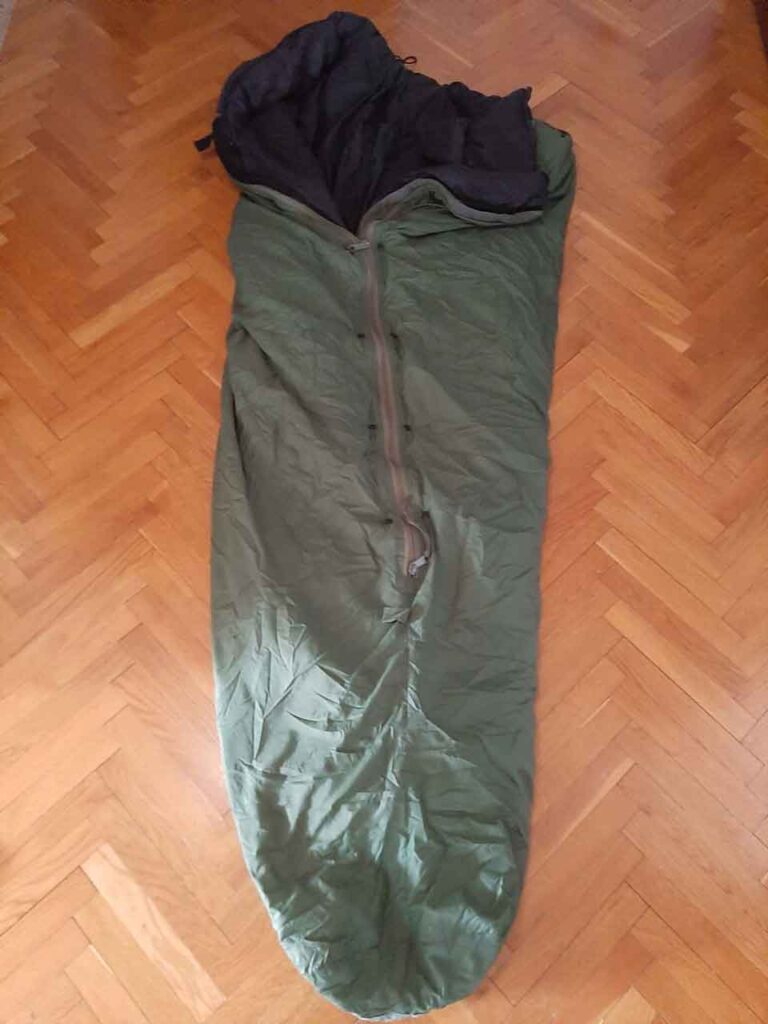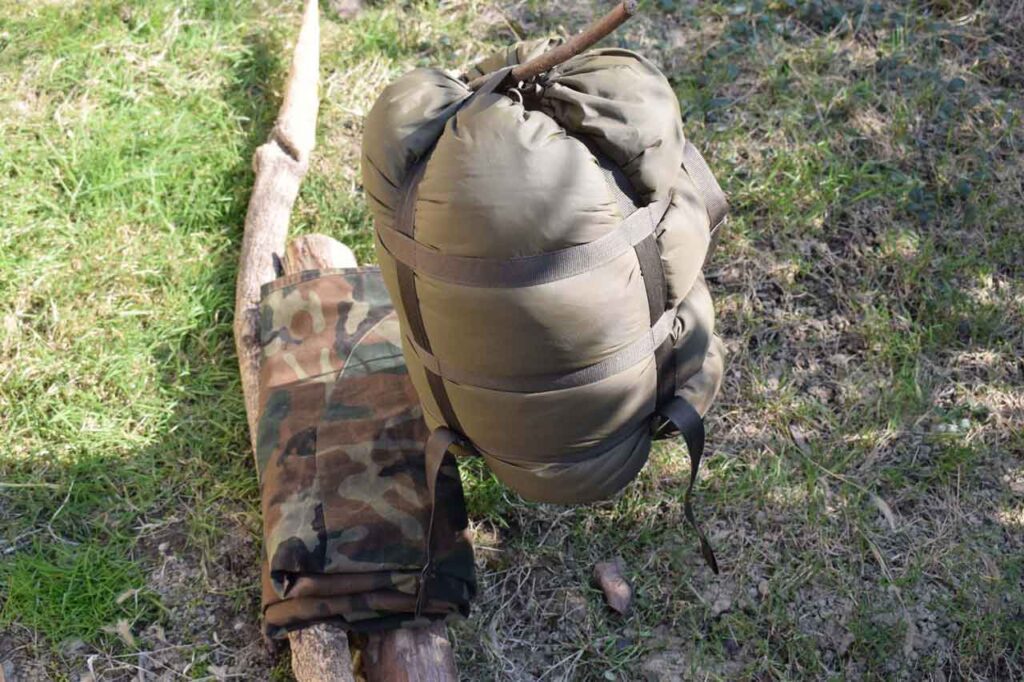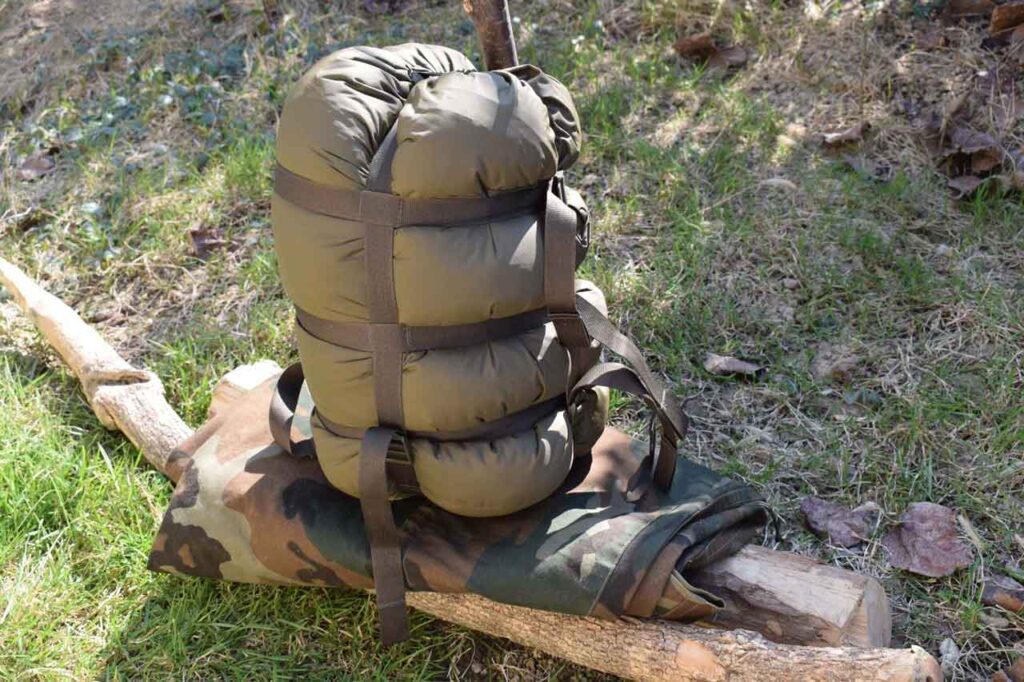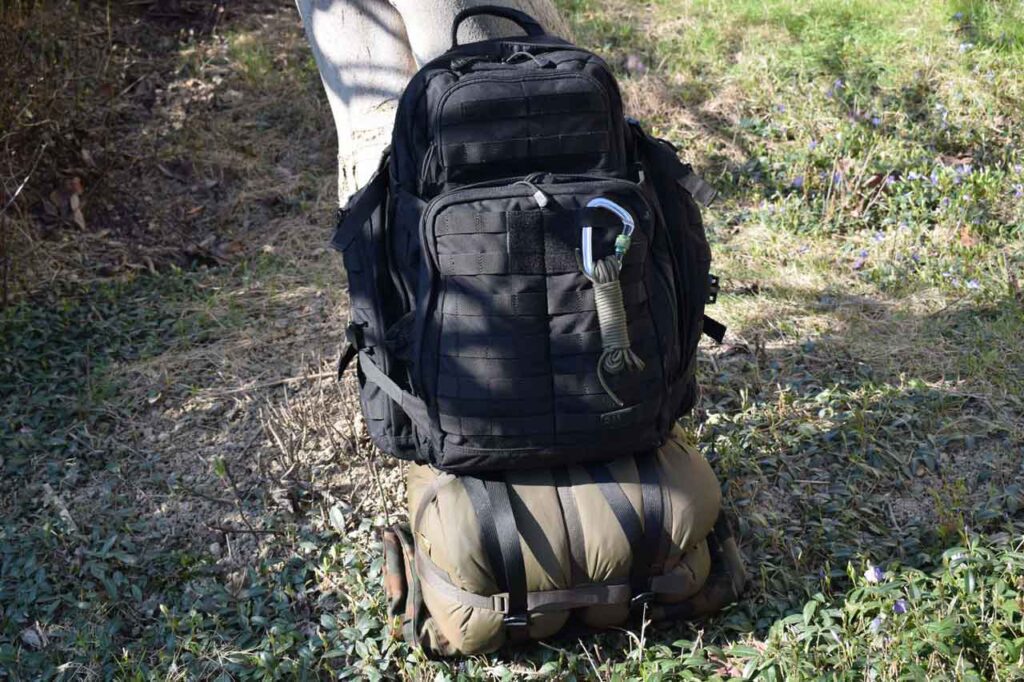The Best Survival Shelter and Sleeping Bags
The best survival shelter and sleep system in a survival situation is one that keeps you alive and comfortable enough to get some much-needed rest. After what is assumed will be a very stressful and tiring day, rest will be essential. It doesn’t need to be a queen-sized memory foam bed, with pillows, blankets, and a hand-sewn quilt thrown on top.
I have seen some ridiculous sleep systems that people attach to their bugout bag as an “emergency” sleep system. Tent, sleeping bag, sleeping pad, groundsheet for the tent, inflatable pillows and to top it all off, a nice thick wool blanket. This system will guarantee a good night’s rest. Of course, it is quite a heavy load, which means that after carrying all that. The person is definitely going to be so exhausted that they will sleep like the dead.
That said, there is a big difference between glamping (camping in style), camping, and a survival scenario.
Camping is about enjoying the outdoors, preferably in comfort.
Survival is a different situation altogether, your aim is to survive a situation that you do not want to be in. You want to be warm enough that you can rest, do not expect to have all the comforts of home. Packing a comprehensive sleeping kit is a great idea in your bugout vehicle.
Tropical Weather Sleeping System
There are countless choices when it comes to sleep systems, for those living in temperate climes, a hammock, tarp, and sleeping bag (with mosquito netting) will do great, or an alternative if you are not a fan of hammocks, is a bivy bag with a wool blanket (for colder nights). Another option is a sleeping bag and a tarp.
If you are adept at putting together a quick shelter, the jungle provides sufficient materials to build a comfy shelter (do not rely on this method without practice).
Best 3 Season Sleep Systems

A decent three-season sleeping system is good for just about 0°c to 5°c, below that and it will start to get uncomfortable. There are ways to increase the warmth that a 3 season sleeping bag provides, use a Mylar blanket to prevent heat loss, wear thermal underwear or warm clothes while sleeping. Just make sure that you do not sweat. Sweating in a sleeping bag will prevent you from getting a good nights rest and will eventually cause other issues. For example: when you wake up and get out of the sleeping bag, you will feel extremely cold if you are all sweaty. There is also the whole drying a sweaty bag before packing issue, a wet bag does not make for a good rest the following night.
Best 4 Season Sleep System
If you stay in an area that has cold weather, be prepared. Sleeping in winter weather with the cold and snow is difficult and presents challenges very different from temperate climes. One should always test out a cold-weather sleeping system to see if it is warm and comfortable enough for you. Each person is different and has a different level of tolerance to cold.
I like the US military 4pc sleeping system by Tennier Industries. It comes with the Patrol sleeping bag, Intermediate cold weather sleeping bag, and the Gortex Bivy cove. Which can all be packed into the stuff sack that comes with the set. It is durable, comfortable, and warm enough for my needs.
The only disadvantage is that it weighs quite a bit more than the modern commercial sleeping bags on the market and is quite bulky. The durability and versatility are unmatched and far outweigh the cons of the bulk and weight.
I have tested the North Face Inferno 0 which was very warm and comfortable, but getting in and out of it was a hassle as the zipper only went down about halfway.
Sleeping Pads to accompany your Sleeping bag.
Should you use a sleeping pad? If compact and you have space and can handle the extra weight. I would say go for it, it makes a lot of difference when it comes to insulation and comfort.
As for me, I don’t use them (except occasionally for camping), they are not part of my survival sleeping system. On occasion, I have tested a couple of different sleeping pads. And i have to say the inflated sleeping pads are more comfortable and keep the cold away. But are substantially more fragile. The foam mats are more durable but provide less protection from the cold ground.
My preferred choice is a foam sleeping pad like a US army rolled sleeping pad. The German Bundeswehr folding sleeping pad is also pretty good as are the Finish styled Savotta sleeping mat with groundsheet.
If I had to pick an inflating mat. My top pick would be the Thermarest z-lite sole mattress, and a close second would be the Kelty Cosmic mummy sleeping pad.

5 Ways A Person Loses Body Heat
Keeping warm in a survival situation isn’t easy, you need to understand how a body loses heat
Conduction
1. Conduction is heat loss through contact with a cold surface.
Solution: Insulate yourself by having a barrier between you and the cold surface. Lay your sleeping bag on a sleeping pad, a pile of leaves, newspapers. Any insulting material that will keep you off the cold ground makes a big difference in heat loss. In a worst-case scenario, make a fire bed.
Convection
2. Convection is heat loss through wind.
Solution: choose your campsite carefully, away from the wind. If unavailable, block the wind with a bivy bag, a tube tent, a shelter made with a tarp, poncho, or natural materials you can find around you.
Radiation
3. Radiation is heat loss from our bodies into our environment. 35 to 45 percent of a person’s body heat is lost through the head and neck.
Solution: wear a hat, beanie, shemagh, scarf, or any well-insulated material to cover your head and neck.
Insulate yourself by sleeping in a sleeping bag, use a mylar blanket, wear multi-layers of clothing, use a tent, find or build a shelter out of any materials you might have.
Respiration
4. Respiration is heat loss through breathing, when we breathe out we exhale heat and moisture.
Solution: Cover your mouth with a scarf or shemagh, wear a balaclava or neck warmer.
Perspiration
5. Perspiration or wetness is heat loss from sweating, immersion in water, or rain.
Solution: Wear an inner layer that is moisture-wicking, wear a merino wool inner layer, avoid exerting yourself until you sweat, change out of wet clothes.
Campfires To Stay Warm
In most movies, people will start a fire to keep warm as they sleep. I wouldn’t recommend this. Fires are dangerous things and should never be left unattended (such as when you are asleep or away from your campsite). On a windy day or night, sparks can fly quite a distance and you may end up with a much bigger fire than you intended to have.
A fire can be used to cook food, purify water, dry out wet clothes and warm yourself, but if you are going to sleep, PUT YOUR FIRE OUT. For Tips on Fire have a peek at Fire is one of the keys to survival.
Rare Exemptions:
In certain situations, you can have a fire burning while you sleep (eg: in winter where you are surrounded by piles of snow), in extremely wet environments, on beaches far away from any vegetation, etc. Professionals will know when and where it is safe to keep a fire going all night. For the majority of people, it is NOT worth the risk, to yourself, anyone who may be with you, or the environment around you.
After all, it’s not survival if you end up turning yourself into a BBQ while trying to stay warm.


My preferred sleep system is the Tennier patrol sleeping bag combined with the intermediate cold weather bag. A tarp to keep the rain and wind away. I pad the floor with foliage, if it is really cold I make a fire bed in advance (this should only be done when absolutely necessary). And lay my sleeping bag on top.
The Best Budget Survival Shelter For a Bug Out Bag
Budget options: buy a couple of second-hand military blankets, a mylar blanket, a tarp, or a couple of heavy-duty garbage bags. While not optimal, if set up well (depending on the weather and setup) it may be sufficient.
Something is always better than nothing, I have slept out in winter with a couple of blankets and a tarp, over a fire bed and while it was a little bit colder than I would have liked, I did sleep (it’s not something I would recommend people do recreationally, although i did 😁 ).
The Tennier sleep system I got is the old version, has anyone tried the new one? If so, is it better than the old one?